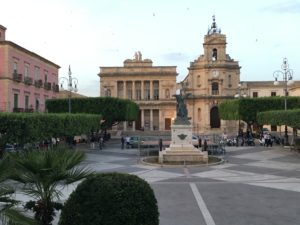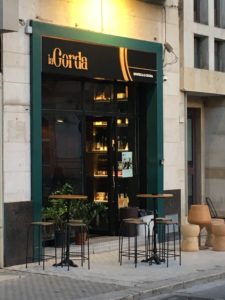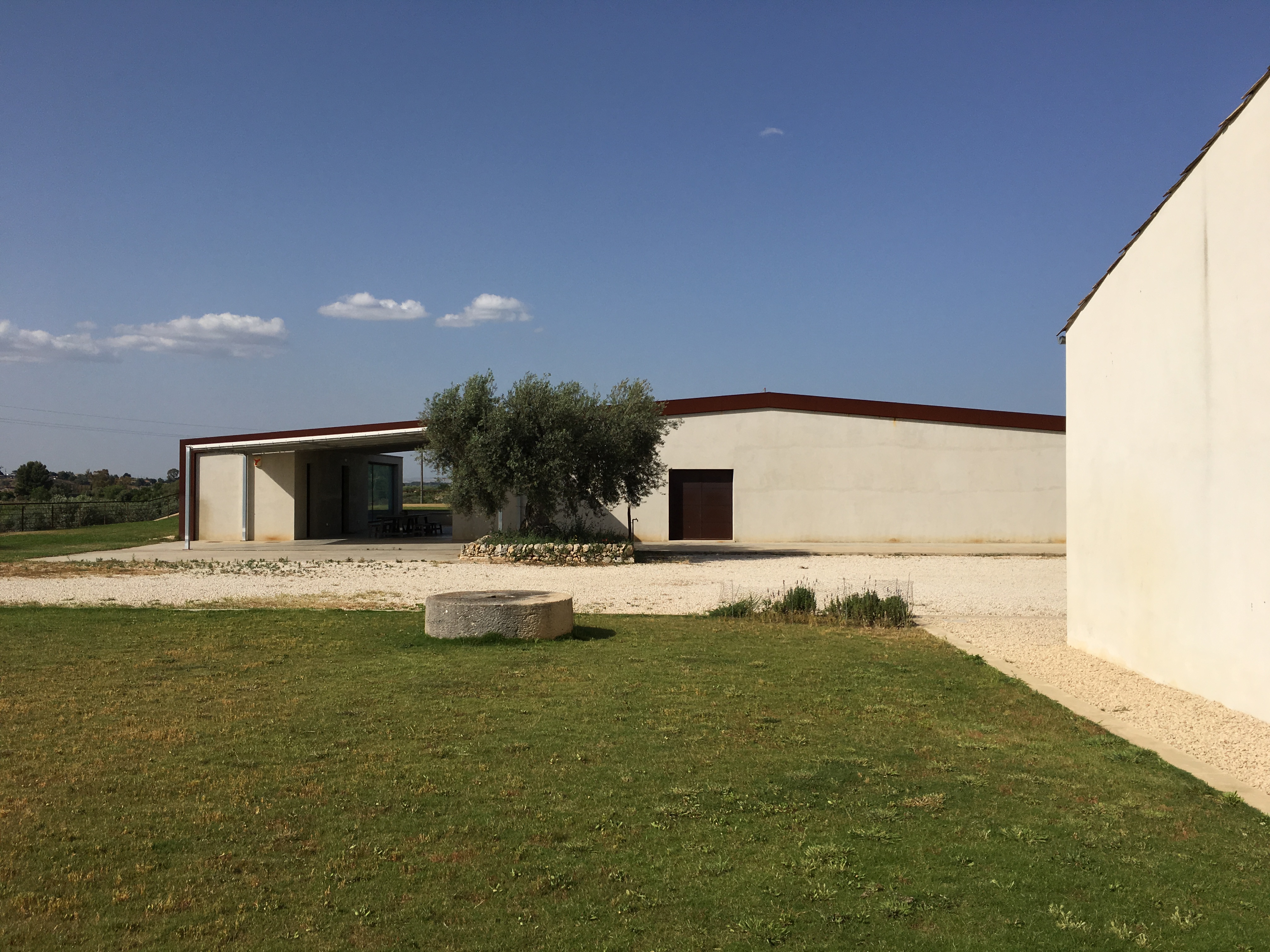My last post covered the circumstances surrounding my visit to the extended Occhipinti family’s home region around the town of Vittoria – the centre of the Cerasuolo di Vittoria DOCG in southeastern Sicily. This post focuses on my visit to Azienda Agricola Occhipinti and its wines.
This winery is the home base of Arianna Occhipinti, who has been making wine here since just 2013; before that she made her wines at the family farm just up the SP68 country road, after which she has named two of her wines. The ‘new’ farm lies in the heart of this largely flat plain that generally slopes gently down towards the southwest coast and the Golfo di Gela. Now up to around 32 hectares, the vineyards are a mix of older and newer plantings, mostly of Nero D’Avola and Frappato grapes for the reds, and some Moscato di Alessandria and Albanello (a native grape) for the white SP68 blend. These are mostly bush vines planted in the traditional Sicilian alberello (‘little tree’) stake manner, while others are planted using the guyot training system.
Occhipinti is a strong proponent of what has become fashionably known as ‘natural’ winemaking, although she eschews that label. The vineyards are tilled by hand and the grapes are grown organically, without the use of pesticides, herbicides, chemicals or synthetic fertilizers. After the harvest, she plants broad beans and oat grasses in the soils between vineyard rows, which helps the soil to oxygenate and feed itself. Taken together, these measures result in healthy grapes that are hand harvested and hand sorted at the winery. Very little sulphur is used. No new oak is used either: the winery has several large raw concrete tanks in which the wines are fermented, undergoing spontaneous fermentation with local wild yeasts. They are then either aged in large older barrels or bottled straight, depending on the wine.
We tasted the following lineup of wines: SP68 Bianco 2017; SP68 Rosso 2017; Il Frappato 2016; Siccagno 2015; and the Grappa di Frappato, which in fact is made by Giovanni La Fauci, a master distiller at Valdina near Messina. After resisting for several years (why remains unclear to me), Occhipinti recently also began making a classic Cerasuolo di Vittoria blend of the two red grapes varieties, which she calls Grotte Alte. However I was not offered to taste it, nor her Passo Nero passito wine.
The SP68 Bianco is a 50/50 blend of Moscato di Alessandria (aka Zibibbo locally) and Albanello. It sees no wood. Refreshing and bright, its vibrant muscat nose somewhat masked the Albanello. It displayed citric acidity and a clean, fresh finish.
The SP68 Rosso is a 70/30 blend of younger Frappato and Nero D’Avola. It was bright red, almost pink: clear, limpid and light. It had a perfumed, aromatic nose of fresh red fruits: strawberry and cherry. On the palate it was fresh and linear, with bright acidity. This is not a ‘sophisticated’, complex wine, and is best drunk young.
Il Frappato 2016 IGT (100% Frappato) was aged in older barrels for 18 months. It too was bright and fresh with strawberry notes and some savoury undertones. With bright acidity and fresh-picked red-berry flavours, it tasted delicious and fresh. In fact the word ‘fresh’ keeps appearing my tasting notes for these wines, which were all clean and unadulterated, just as Arianna likes them.
The Siccagno 2015 IGT (100% Nero D’Avola) was aged in older barrels for 34 months. While it displayed a deeper colour than the Frappato, it was still bright garnet rather than deep ruby or purple. It offered up a fresh (that word again!) aromatic, elegantly perfumed nose. On the taste it was fresh, with bright red and black fruits. It was soft, elegant and smooth, ending with a saline, mineral finish. This one can age, but why wait?
Finally, the palate-cleansing Grappa was intense and powerful, yet fruity.
All in all, I admired the clarity, simplicity even, and above all the freshness and honesty of the wines, although I am unconvinced of their age-ability. I guess time will tell.

That evening we went into Vittoria and ate at La Gorda, a self-described enoteca located just off the central Piazza del Popolo that is the focus of public life in this rather charming if overlooked country town. Calling it an enoteca is underselling the place however, as the food was both sophisticated and delicious. I put the wine choice in the hands of owner Salvador Espata who, judging by his wine display, clearly knows his stuff, and he selected for us a bottle of Terraze dell’Etna Cirneco 2011 Etna Rosso DOC. From a great vintage, it proved to be an inspired choice, with a suavely perfumed, metallic, ashy nose; intense, complex mineral and stony notes on the taste, with pronounced acidity and a tart, long finish. It was delicious with our starter of salumi and aged pecorino cheese, a primi of pasta with fennel and sardines, and a sublime secondi of grilled seabass in a crushed pistachio crust.

Towards the end of dinner, Salvador came by our table and we talked wine. He shyly told me that he also collaborates with Arianna Occhipinti in making a wine called Tami’, from what I understood were his own Nero D’Avola grapes. He offered me a glass to try and it too was delicious, if a bit fuller and richer than the wines I’d tasted earlier at Azienda Agricola Occhipinti.
And so it was that I came full circle: a day immersed in the vineyards, wines, food and yet more wine from this special corner of the Occhipinti family’s Sicily. Highly recommended.


